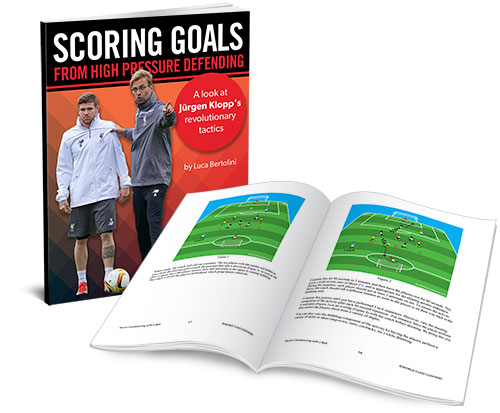- You are here:
- Home »
- Author's Archive:
All posts by Michael Saif
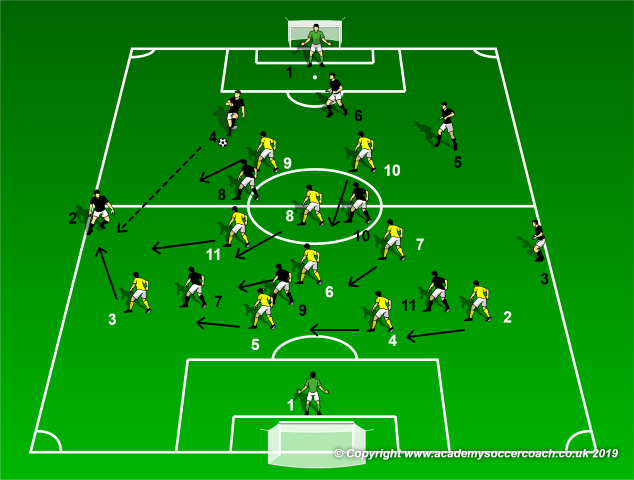
Triangle Shooting Game
By Matthew Carroll
Description:
The Triangle Shooting Game is designed to create a competitive shooting environment where elements of short rhythmic passing, pass and move, as well as finishing are integrating into a short effective drill. Can be used in practice or as a pre-game warm-up
Setup:
Place three cones in a triangle about 5-10 feet apart just outside of the 18. Players line up behind furthest cone
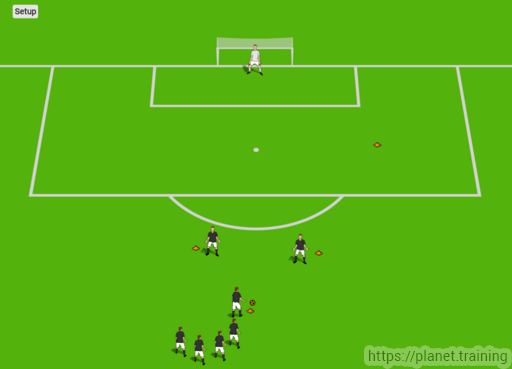
Execution:
The first player in line passes to the player at the cone to the right. That player passes the ball to the player standing at the cone diagonal himself. The ball is then laid off for the original passer who runs through the middle of the triangle and shoots the ball on net.
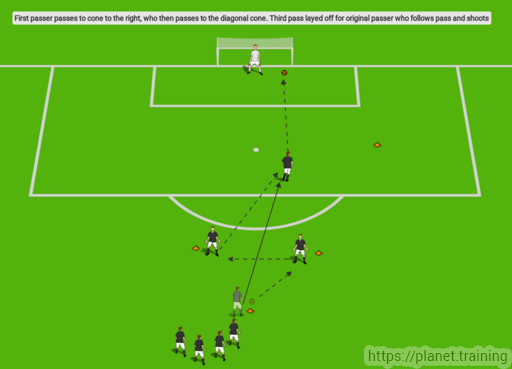
After the shot the shooter then returns to the left cone, the passer from the left cone moves to the right cone, and the passer from the right cone goes to the back of the line. The process repeats for 2 minutes.
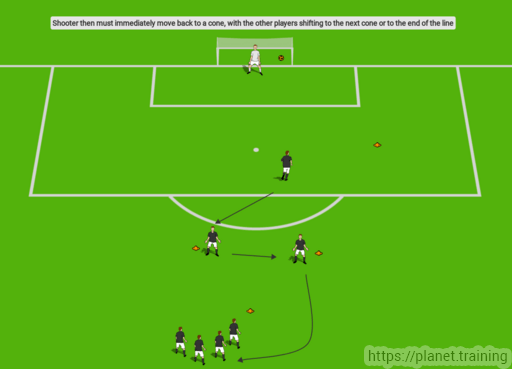
Variations:
Players can be split into two teams and the drill can become a competition
Stipulations can be added such as left foot only
By Matthew Carroll
High Pressure to Force Long Passes
By Luca Bertolini
Liverpool have scored lots of goals this season as a direct result of their high pressure defending tactics. There are a number of benefits that can result from high pressure defending. This article takes a look at just one of the aims of those tactics…forcing the opposition into long passes from their own half of the field.
Looking at Klopp’s history as manager “no playmaker in the world can be as good as a good counter-pressing situation”; this means that a side by side passes move often requires slow build up play, and that, on the other side, the counter-pressing can create chances within seconds.
The organization behind it is the key, as Klopp’s pressing isn’t simply a closing down but a group of players all functioning as one to smother the opposition, as they look to launch a counter-attack.
The first interesting factor is that the team recognizes when they have enough players close to the ball, who are able to press the opponent with the ball and the area around it.
The players who are not involved in the pressing around the ball must ensure that a potential long kick from one of the opponents can be controlled and they must be able to press again a second receiver, if the first pressure doesn’t work. They also have to be in a position to potentially win or intercept a wrong pass from the counter pressure, to recover the possession with the chance of organizing a counterattack of their own.
All the other players placed on the other side of the ball, recover immediately and quickly, either to join the pressing swarm or to recover goal side of the ball and to be placed in a position to be one of the covering or interceptor players; if these players are in possession, usually the moves are built up with pass combinations rather than with direct counterattack.
As we already found out in the first part, an important objective of the high pressure is to close the short pass lines and to force long ones toward the midfield area; the same happens when Liverpool’s forwards are placed inside or near the opponent’s penalty area.
After the forced long pass toward the middle third, win the second times and the wandering balls.
So forcing the opposition into long passes, gives you the opportunity to win back possession of the ball and start a quick counter attack. There are many other benefits of high pressure defending too. Klopp, Guardiola, Conte and more of the world’s top coaches have figured this out.
This is article is just a short excerpt from the book Scoring More Goals Through High Pressure Defending by Luca Bertolini.
Do Spain Play With a 4-3-3, 4-2-3-1 or Both?
By Stevie Grieve, author of Modern Soccer Tactics
Spain’s formation is a source of great debate and intrigue. Is it a 4-3-3? Is it a 4-3-3-0? Is it a 4-6-0? Is it a 4-2-3-1? Is it a 4-2-4-0? Is it a 4-2-2-2?
I think it’s a combination of the above. Some matches they will ensure they have a central striker, generally Cesc Fabregas, who will rotate this role with David Silva, with Xavi and Iniesta floating around the space between midfield and defense. They play with a narrow attacking 4-2-3-1 or a narrow 4-3-3 as Alba and Arbeloa do a great job or providing width very high up the field and allowing Spain to regularly outnumber teams between defense and midfield, allowing them to play between the lines frequently.
In the final where Spain played undoubtedly their best football of the tournament, they played a combination of 4-3-3 and 4-2-3-1, and Xavi’s position dictated the shape. In some attacking phases with the ball in the opposition half, he would drop deep and 2 of the 3 of Silva, Iniesta and Cesc would play in between the defense and midfield with Alba and Arbeloa the full backs on the outside, with the other of the front 3 staying as a central striker. In some defensive transition phases, Spain would revert to a 4-2-3-1 with Alonso and Busquets screening the defense, with Xavi, Iniesta and Silva pressing in front, with Cesc as the main striker. When they win the ball back, they would stay in this formation and confuse the opposition as players positions and the marking responsibilities have changed again.
Xavi and Iniesta switch positions – 4-3-3 inside opposition half
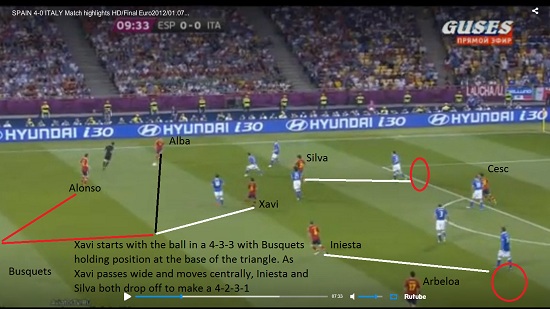
Xavi drops into a 4-3-3 as Silva and Iniesta drop off from the front to offer passes from midfield. Xavi passes wide to Alba andContinue reading
What Tactical Formation Did Spain Use to Win Euro 2012?
By Wayne Harrison
SPAIN PLAYING THE 4-2-3-1 AT THE EURO’S

The starting position phase formation is approximately a 4-2-3-1; the attacking phase is 4-2-1-3 or 3-3-1-3; and the defending phase is a 4-4-1-1, so we haveContinue reading



